|
UnExCo Home Pest Info Central Carpenter Ants Termite Links Termite Message Board |
| |
| |
|
|
|
|
|
|
| Termites, of one type or another, live everywhere the soil isn't permanently frozen. Some areas naturally have more termites than other places. The further you go towards the equator, right down to the tropics, the more types of termites inhabit the environment. |
|
|
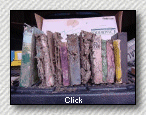 |
|
| Do you have a swimming pool with a vinyl liner? One where the liner is in contact with the ground? Termites will eat right through that, too. (How Do They Do That?.) |
|
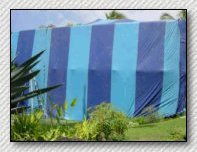 |
|
|
| Generally, in the tropical parts of our world, fumigation is required to completely rid our homes and businesses of termites. |
| Powder post beetles are another one of the wood destroying insects, normally not as much of a problem as termites, for pictures, go here. |
|
 |
|
|
|
|
|
| These special reproductives are usually generated when termites have been disconnected from the main nest but still have moisture and food. This activity can continue for as long as they have access to moisture. |
|
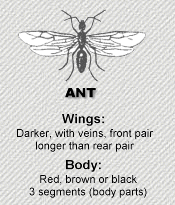 |
|
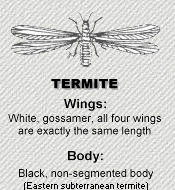 |
|
|
|
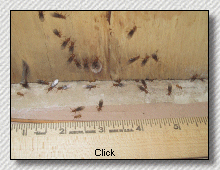 |
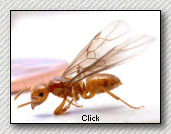 |
|
|
|
|
A LITTLE TRICK TO FIND OUT WHAT YOU HAVE.... If you have a swarming insect problem and don't know for sure if it's flying ants or termites, this is a way for YOU to find out. What you do is to take a few LIVE (unsprayed) samples and put them in a jar, then put the jar, closed, of course, on a sunny windowsill. If it's termites, they'll die within a few hours, almost certainly overnight. termites will often shed their wings, and the next day you'll see dead termites and shed wings. Check where they were coming from. You should see shed wings there too. If they're ants, they won't shed their wings and the ants will still be alive. Ant swarmers are very long-lived and will often live a week or more. (I had specimens, in a test tube, on the dashboard of my truck, which lasted almost two weeks.) |
|
OTHER DIFFERENCES: When compared together, as above, ant and termite swarmers look different. They also ACT different. Termite swarmers are short-lived, numerous but very fragile, and appear to be completely indifferent and oblivious to anything except strong light sources and the other sex. Predators carry them off or eat them on the spot. All without any resistance or awareness of their own plight. The termites neither see nor acknowledge anything else, friend or foe. They are also clumsy fliers and not well adapted to surface travel as are the ants. Immediately after mating, in nature, the female will attempt to burrow into the ground, and ultimately, if she's successful, will form a new colony. Ant swarmers, however, just in case you're interested, act quite differently. Compared with termite swarmers, they even seem "intelligent." They are strong and long-lived, obviously aware of their own immediate surroundings, respond to approach and will attempt to avoid predators. As the ants are terrestrial, they are much better suited to survival on the surface. Since the ants are so successful, there are substantially fewer reproductives that need to be produced by the colony, and in some years, small swarms might not even be noticed or discovered. |
| Termites and ants are mortal enemies. When they do meet, there is WAR! Usually, it's the ants that win, they are generally so much tougher than the termites. Besides, the ants are terrestrial, while the termites are not. So the open ground is where they will meet, giving the ants the best chances. These two pictures show what happens when ants meet termites. |
|
|
If you live in the northeastern United States, as well as many other areas, the fall (and the spring,
too) often brings episodes of "flying ants," the swarmers of the ant world. They act much the same as
termite swarmers, look somewhat the same, (see above) and like termite swarmers, can appear within
seconds, bringing to mind some of the worst Hollywood movies. But, in fact, this is a normal occurrence,
only a product of Nature, happening every fall in most parts of the temperate world. So if it's fall,
and kind of a nice, Indian Summer-type day, and your swarmer looks just like an ant with wings, and it's
red or brown - it's a flying ant. Naturally, swarming termites or ants can actually happen at ANY time,
but weather is the best creator of the spikes of swarming you can experience in the spring, early summer
and fall. If you're under contract with an exterminator, you'll want to save a sample for him to examine. Save a few in a jar so he can stop by and identify it, to make sure it is not a termite problem. In fact, any good exterminator ought to be able to tell you the difference, over the phone, between flying ants and termites, if you have the samples in front of you and you can give a good description. Make sure you always have intact samples if you invite an exterminator to your house. Without a target, there is little he can ethically do. SHOULD I WORRY, DO THESE FLYING ANTS MEAN ANYTHING? Not really. Ant (or termite) swarmers do no damage, are not interested in feeding on anything inside or outside your house, vector or carry no diseases and are perfectly harmless in every way. WHAT TO DO? If this is happening on the outside, don't worry about them. Let the birds or other animals have their fill. These creatures do absolutely no harm and no treatment is recommended, outside or inside, even if you find these swarmers next to or even on your house or it's foundations. Sometimes, these episodes can happen just once, and not in the following few years, or return just occasionally or even skip a year or two. A successful colony (termites or ants) can swarm twice per year. |
|
PANIC IS YOUR BIGGEST ENEMY Swarmers emerging on the inside of a structure will often move towards a sunny window and they can therefore be easily vacuumed up on windows or even from their emergence points. The use of Raid or other insecticides you buy at the grocery store or Home Depot is not necessary or even recommended, you'll run the definite risk of staining something for sure. No panic is necessary, no visits from the exterminator, no treatment of any sort is required, and the swarming episodes usually will end quickly without any chemical or physical intervention at all. It is indeed hard for me to imagine that any ethical exterminator could justify the use of harmful chemicals on such a harmless animal. WHERE DO THEY COME FROM SO QUICKLY? It is often hard to determine exactly where these insects may actually have their nest home. Over the years, their nest moves and changes dynamically, depending on many factors, so this swarming can be quite common in crawl spaces and even in basements. If the ants are coming up from a crawl space, just turn a light on in the crawl space, leave it on 24/7 until the next cold snap. At which time any swarming will be over and done with. (Don't forget, flying ants are attracted to lights!) This is the best non-toxic, cheap fix, and all that's necessary. You can use the same trick if they're coming up from the basement. |
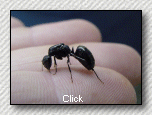 |
|
|
|
|
If you keep firewood in a pile, on the ground long enough, yes, it will definitely get termites. Subterranean
termites, foraging below ground, will soon find your firewood treasure pile and will attack it just as
well as your home - or any other cellulose material that is on (or in) the ground. Woodpiles, in place
more than a year or so, are almost certain to be found by termites normally foraging in the ground. IS IT A DANGER TO BRING THE TERMITES INSIDE? If you have firewood, infested with subterranean termites, you don't have to worry about "bringing termites inside." Termites, once disconnected from their nest and the ground, and with no source of moisture, will soon perish. They must have constant contact with both the nest and their queen, as they must regularly make the back and forth trip to the main nest. If they cannot do this, they will not be able to survive on their own. Use the firewood for it's purpose, termites and all. Don't let the wood warm up, put it right into the fire. KEEPING THE BUGS AWAY FROM THE FIREWOOD First of all, NEVER spray firewood with insecticides. When burned, many chemicals will release toxic components into the air and your lungs. If you want to keep the termites from infesting your firewood, or even being attracted to it's location, keep firewood up off the ground. You can keep it outside in a shed or in a garage or even out in the open, just keep it off the groundand a few feet away from your house. If you stack it too close to your house, you may have other critters in your woodpile. Also, if you stack it RIGHT next to the house, you (or the exterminator) will not be able to see what's going on behind your woodpile. This will make any exterminator worth his salt extremely suspicious. Keep wood stacked next to your house at least 18 inches away from the structure. Also keep it up off the ground, keep leaves and debris from hiding any space between your woodpile and the house. THE BUGS YOU WILL SEE IN FIREWOOD Be warned that if you bring in firewood from the outside, you're almost GUARANTEED to bring in many other different insect pests that will have used your firewood as a home to rest or overwinter in. Wood purchased and used as firewood is often loaded with insects that have been in there since the tree was harvested. Also, these firewood harvests are often made on trees that are already insect infested and usually poor candidates for any other use. So make sure you bring in your wood and use it immediately. Leaving wood inside, when it warms up, means that you must expect visitors. Nothing harmful, and usually nothing that reproduces or even survives on the inside, but a sudden and unexpected invasion of, say, Locust borers or Metallic beetles, on Christmas Eve, swarming all over the place, could be quite disconcerting... Now, what was that exterminator you liked? |
|
| |||
|
|
| |||
|
| Or perhaps the inspector just found termites in your yard somewhere... Our own National Pest Control Association has issued a guideline on that problem. |

| Termites develop via gradual metamorphosis, from eggs to nymphs, through several molts, to adult stage. They are social insects, just like ants and bees, and are, in fact, related to both. Each year, usually in the spring, each mature nest sends out special adults, called alates. These are most commonly known as "swarmers" because they swarm out of the colony in bunches, usually in the springtime. These emerging swarmers are what usually alerts you to the fact that you have a termite problem. It happens all of a sudden. One moment they go from zero to hundreds - you'll swear they're millions! |
|
TERMITES USUALLY SWARM IN THE SPRING But sometimes in the fall, too. Especially if it is a successful termite colony and needs to expand. Depending on where you are, here in the states, subterranean termites can swarm anytime after the winter solstice on December 21st. Usually, it's later in the spring. Here in the northeast, the main swarming season is just about the time you see the Forsythia bushes start to bloom. Being a cyclical insect, sometimes there are more swarming termites in some years, than there are in other years. |
 |
|
|
|
OK, IT HAPPENED, SO WHAT DO I DO NOW? Well, for the swarmers? Nothing. They'll soon go away. They're harmless anyway. They don't eat anything, they are not dirty, or vectors or carriers of any disease, they won't lay eggs, reproduce in your house, get in your food or furniture, (on purpose) and will die all by themselves in an hour or two, if they can't get outside. They are attracted to light, and if they swarm on a sunny day, which they usually do, they will head towards a sunny window, or another source of light. They will die in a short time and the easiest solution is to vacuum them up. DO NOT SPRAY! While spraying will kill them, it will also get everything you spray greasy with insecticides. Do you want that? I don't think so. Much better is to wait until they die, and then zip them up with your dustbuster. Call the exterminator. |
|
WHAT TO DO NEXT It is important to find out where the termites are coming from. Look carefully, ignore the ones that are already out and concentrate on where they are coming from. This may be extremely important to the exterminator. Swarming termites will be attracted to light, so you could have termite swarmers on a sunny windowsill, but they're REALLY coming from 20 feet across the room. So track down the place(s) that they're coming from. It will help the exterminator focus his treatments. |
|
TERMITE CONTROL - A REAL SHORT COURSE Understand, of course, how your house was built.The builder, years ago, scooped a hole in the ground, constructed the basement, (if you have one) and backfilled the foundation. Construction debris, left in the backfill, is the attractant for termites. "Construction debris" is any sort of wood or cellulose material - bits and pieces of 2x4's, roofing paper, sawdust, and even paper 7-11 cups. |
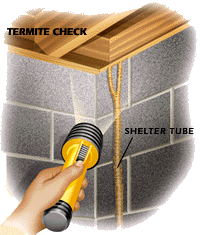 |
|
|
|
| Don't expect your inspector to be anything more than human. Which means he doesn't have X-ray glasses to see inside the walls, behind paneling or other obstructed areas. It is entirely possible for you to have active termites, for years, and never experience or see any outward signs of their presence. This is true even for the "pro," and even if you have them make regular inspections. Remember, there are no experts. Every exterminator learns something new, every single day, and every house is different, from every other, even if they look exactly alike. Each has a completely different set of variables that affect how and when any structure gets termites. |
| |||||
|
|
 |
|
|
WHAT THE EXTERMINATOR DOES Unfortunately, termite control is never an exact science. It is an expertise, so every exterminator can have different and individual control methods. For the record, the National Pest Control Association, and all of our other official institutions, recognize the efficacy of soil poisoning for subterranean termite control. That means, basically, that a chemical is placed in the ground, next to the foundations, to kill the termites and prevent their return. Below are some walk-thru examples of termite jobs done by us or other exterminators. |

|
|
|
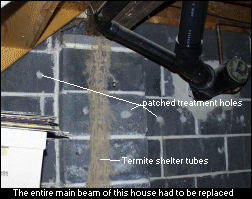 |
| Depending on how your house is built, termite control might involve several procedures to treat all of the foundations. Most of the time, exterminators like to work from the outside, but sometimes treatment must be applied from the inside. Slab-on-grade construction, with no basement or crawl space, can require special termite control procedures. |
|
|
|
 |
|
|
The most notorious, for exterminators and homeowners alike, are slabs with the heating vents cast right
into the concrete slab. Because of the danger of contaminating the vents themselves, most exterminators
will need special conditions before they render any treatment to slabs of this type. Some will not perform
any work on a slab of this type, some will make you sign a three page legal document, absolving them
of any responsibility, no matter what. The vast majority of exterminators will not do anything until the vents are capped and relocated, certainly a very expensive proposition of not less than three or four thousand dollars, at the least. Most construction, nowadays, uses plastic or metal vents for conducting heat under the slab. \In past years, even cardboard vents were used, termite food for sure. Even so, there are instances where metal heating vents were staked down with wooden stakes instead of metal. Termite food, again. Many times, the wooden forms (from concrete pours) are left in place, attracting the first round of termites quickly. Sometimes it is necessary to cap the heating system in the slab and install a new system which doesn't use the buried vent system. For cost purposes, this is a last resort. Oftentimes it is possible to treat slabs with heat vents, depending on the circumstances. |
|
RADIANT HEATING PIPES Equally difficult to treat, are structures with radiant heating pipes cast into the slabs. Exterminators need to determine EXACTLY where the pipes are located within the slab. A slight miscalculation means that you may pierce the pipe, causing a leak in the heating system, necessitating repairs to the system. A danger that sometimes can't be avoided. |
|
A TREATMENT NEAR HEATING VENTS The house pictured below has had intermittent termite problems for a few years now, this year's problem seems limited to the pictured area. There is a heating vent situated in this area, but we have opted to treat the area with a standard soil poisoning, using Premise 75. We would not treat this area if we were not confident that the heat vents will not be affected. The times we have ordered capping of heat vents you could count on one hand. |
|
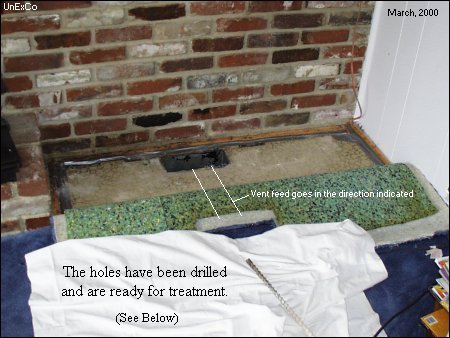
|
|
 |
|
|
|
|
 |
|
 |
|
|
 |
| |||
|

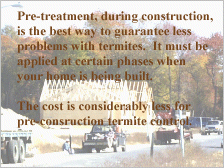 |
|
|
|
WHEN, EXACTLY, IS PRE-TREATMENT PERFORMED? New construction of homes, or additions to existing structures should always be pre-treated. Pre-treatments are applied during construction, which, depending on the structure, might take several visits. This treatment, coupled with good building practice is what will keep the termites away longer. Not forever, but longer. For more complete information about termite pre-treatment, and how the process goes, please visit our Pre-Construction Treatment Page. |
|
|
|
 |
|
|
Should you treat your home to prevent termites? Well, you definitely should if you're building a
house. However, if your house already exists, the treatment to 'prevent' a termite problem might well
be a waste of your hard-earned money. At least that's the way I look at it. What the exterminators (salesmen) will tell you, is that there's two kinds of houses: Ones that have HAD termites and ones that WILL have termites. Very true. But you don't necessarily have to extrapolate that into an immediate termite job. What the salesmen DON'T tell you is that the exterminator can do his job just as well when the problem crops up. Besides, there is always the chance you'll never have the termite problem before you move away from the house! Not only that, but just because you had the preventive work done doesn't mean that you'll never get termites. You could get them anyway, regardless of what was done. We see it all the time. And I defy any exterminator to tell me this isn't so. ALWAYS THINK STRAIGHT So plain common sense might tell you that you might not want to fall for the old 'preventive treatment' routine. You could just as easily wait until it happens! Then, when it does, (if it does) take your time to get the RIGHT exterminator to do the job. One that doesn't hustle you into a quick decision. Ask each of them if they mind you waiting "for awhile" - say, several months or even more. If anyone tries to scare you into an immediate treatment, you're probably better off if you eliminate the salesman-types that press you hard with a "hurry up" price. An ethical exterminator will confirm that termite control is not an emergency procedure. Keep the names of the good ones. And the bad ones too. |
| And yes, there are exceptions to this rule, I guess, but I can think of only a few special exceptions - very few. As far as I'm concerned, the general rule is to wait until termites happen. |
|
A Caveat: When you sell your house, you will probably be required to furnish a "termite certification" to the new buyer. You should always accept/furnish a termite inspection, certificate and fix any damage from wood boring insects. In a case such as this, you might be best to clear up all these items before you even list your house on the market. In this way, you'll eliminate the last-minute frantic efforts to fulfill these options, when you might have to pay more for this 'emergency service.' So fix it before you have to be in a hurry to do it. |
|
Another one of those exceptions, when it is really perfected, will probably include termite baiting.
In some cases, preventive termite control, using baits, may well become advisable on some existing structures.
To my mind, the most efficacious method, at present, for treating termites, is, and will continue to be termite pre-treatment, using soil treatment techniques, during construction. Eventually, even a properly pre-treated structure will develop termites, and depending on construction, may well be a good candidate for termite baiting in the future. (See my page on termite baiting.) [ I don't like it.... ] |
|
| Actually, most houses not treated during construction, will show evidence of termites anywhere between 15 and 25 years of age. This is not a hard and fast rule, of course, some get them sooner, some go longer. So if your house falls within this age group, you are at definite risk of developing termite problems. |
|
|
Some houses get termites MULTIPLE times - over and over, no matter what the exterminator does. This
is the proverbial "nightmare termite job" and every exterminator has a few of these kinds of houses.
The conditions that cause this to happen are many, and are often difficult to solve, taking a great deal
of time and resources for the exterminator and patience by the homeowner. CAUSES There are many factors that determine this, and most are concerned with building practice. The termites are in the soil, everywhere, and are only doing their only job, which is to find and eat cellulose materials in or on the ground. If the builders or subcontractors left too much debris in the backfills of your home, the chance of termites in a shorter period of time becomes more certain. Dirt filled stoops, patios or planters also allow termites access to the structure above grade. That's why people often see the termites in those places. OTHER COMPLICATIONS Slabs, slabs with heat cast into the slabs, and especially dirt-filled slabs have an excellent prospect of having continuing problems. Unusual and uncommon construction practices have a direct effect on the emergence of termite problems. Finished basements often do not allow direct inspection of the sub structure or house systems, so prospective homeowners should avoid unprofessional, unknown or even unusual construction. You might think it would be nice to have one of those fancy, unusual, one-off custom homes that everyone else will envy. Unless it's so unusual, unconventional, undocumented, or (perhaps worse) documented incorrectly, so that no exterminator will want to work there without draconian contract conditions and prices. Take it from the exterminators - probably best to stay away from the weird construction. |
|
| Homeowners with multiple termite treatments for control of yearly termite problems, sometimes for years in a row, are well aware of just how bad termite problems can seem to be. Sometimes the reason for this is known, but oftentimes it is only a guess. Debris left in backfills, grade stakes or forms left in places unseen, or even just localized soil conditions can cause the problem to recur on a yearly basis. No purpose is served by switching exterminators when, after a few years, you still have termite problems. All exterminators have these repeating problems, (even us) so unless the exterminator is uncooperative, it is usually best to stick with the exterminator that best knows the problem. |
| So, if your house has been treated for termites in the past, and you know who that exterminator is, he will be the first one you should turn to in conditions like this. If your exterminator is no longer in business, or perhaps is unknown, you'll have to make your deal with another exterminator. Pick carefully. Think of it as a long, close relationship. |
|
|
The termiticides used by exterminators today are as safe as manufacturers can now make them. Remember,
all pesticides are toxic to some degree, and there is no such thing as a "non-toxic" pesticide. There
are many different brands of termiticides and several different types. Most of the time, it doesn't really
matter what chemical is used, and it's usually best to let your exterminator make the appropriate decisions.
Remember; most of the time, it isn't what you use, it's how you use it! TERMITICIDES Over the years, many different insecticides, of different types, have been used in termite control. In years past, insecticides in general and termiticides in particular, have strived to be "long-lasting" - the thought being that "longer is better." This is not necessarily the case, in many instances, and man's ignorance has provided another millstone for us to carry. Today, manufacturers strive to make their products as least "toxic" as they can, and still get the job done. In the case of termiticides, this has taken the industry from the older "repellent-type" products, to the non-repellent ones that are more favored now. Termite baiting systems have also surfaced, several types, actually. Supposedly, all of the newer methods and chemicals are less "invasive" to both the customer and the operator but will still be effective against the termite problem. It is a delicate balance that is best determined by an experienced inspector/termite man that can recognize the variables that might affect the final result. |
|
STATE LICENSED APPLICATORS Here in New Jersey, where we were always based, practicing exterminators are licensed by the state, have very specific insurance requirements, and must attend regular seminars to keep up their licenses. The New Jersey regulations, along with California and New York, are among the toughest in the country. Many other states model their pesticide regulations after New Jersey's. AND AFTERWARDS? Termite control is just that - control. It is necessary to follow up on your original treatment by having regular inspections. Termites can recur at any time. Regular (annual) inspections will help us, and you, to control the termite problems that may well surface in the future. (For more information, see our Renewal Inspection Page.) |
|
| |||
|
|
|
TERMITE SNIFFING DOGS I must admit, years ago, the first time I heard this, I laughed. But actually, this is no laughing matter. Dogs do have a very acute sense of smell and can be taught to search for the smell of active termites. Termites produce vast amounts of methane in today's world, and we would not have a good time, here on this earth without them, believe it or not. The highly-trained dogs can detect this methane and will alert a handler or an inspector to its presence. Anyway, one day I was doing a termite inspection in someone's crawl space and their dog had entered the crawl after me. Well, after watching this dog, (beagle) sniffing around in the crawlspace, easily getting to the areas where I had difficulty, I realized that a dog might be able to move around easily and detect termites that might not be accessible to me. ALL THIS IS VERY TRUE, BUT..... Except for a couple of things. The dogs can't find powder post beetles and they can't find other wood destroying insects, they won't sniff out termite damage and cannot detect any inactive termite infestations that may only be currently inactive. Very serious failings, and these are situations that must be listed in any termite reports exterminators file. Later, Consumer Reports did an article advising homeowners to use an inspection service that used dogs to detect the termites. Then, of course, we got a rash of calls asking for, or insisting on using dogs to make inspections. But Consumer Reports, like anything else, can be wrong too. While the dogs can often detect active termite infestations, their above failings still demand that a human inspector makes his own inspection. The dogs have, however, been known to uncover infestations that are inaccessible and invisible to a human inspector. |
|
THERMAL IMAGING FOR THE DETECTION OF TERMITES This is a newer method, (the Termicam Company) in use and development in Australia. It is said to have the added advantage for inspection for other things, such as rodents and heat loss studies. Specifically, for the detection of termites, it still suffers the same problems that dog inspections do. That is, they don't detect termite damage, carpenter ants and powder post beetles, and they won't detect termite infestations that may be currently inactive but still viable. |
|
SAND FOR TERMITE CONTROL Sand barriers? Sometimes they work - especially if they're installed correctly. Frankly, standard soil treatment is usually more efficient and probably less expensive too. For someone who is "green," it is an alternative that doesn't use chemicals. Proper sand is 16 grit - that which is sifted by a 16 gauge screen. Actually, better, is crushed volcanic cinder. Mostly, it is used in California and Hawaii where volcanic cinder is easily available. Smaller grits can be carried away by workers, larger grits will support their shelter tube construction. Installation is important, and there are other concerns, such as migration, subsidence and settling. You can read what a gentleman from California wrote to me, about his experience with sand for termite control. |
|
STAINLESS STEEL MESH There is a mesh that can be installed as a shield to keep the termites from entering a structure. The mesh is installed between the foundation and earth or the wooden framing. This would be a difficult procedure in any situation except new construction. It has been tested by the US Forestry Service, in a testing situation, and they have glowing reports showing zero infestations after four years in a controlled study in the usual four locations in the United States. (Arizona, Florida, Mississippi, and South Carolina.) The company, (Termi-Mesh) in Australia, claims they have tested this product, without failure or corrosion, in a seaside setting, for 16 years. They have posted the results of those tests. THE GOOD PART The good point is that there is absolutely no use of any pesticide with this procedure. It is designed and meant to last the life of the building itself. Satisfy all you "Greens" out there. Terrific idea. But, I guess, in the alternative, we also have to think about what we needed (to burn, pollute, destroy, change, disrupt) to create the stainless steel mesh itself. (I'm taking the "Greenie," side here....) THE BAD PART Which brings us to the one real downside, in my mind. Folks, you have to be ALL Green to go this route. Meaning, get out that fat wallet, you're gonna need it. This material is expensive to manufacture, it is also fabricated, which means even more expense. Lastly, it has to be installed correctly, by "accredited installers," with no rips, tears or other interruptions. A termite can enter through any crack larger than a 64th of an inch. Not a whole lot larger than the period at the end of this sentance. This mesh NOT something you pick up at Home Depot and do yourself. And to be a TRUE shield, must be under the ENTIRE footprint of the structure. This method is best done during initial construction. DON'T GET ME WRONG.... It's not that I have anything against any of these systems, it's just that you have to take this into perspective. None of these methods is the Complete Answer. They all may have benefits at some point, in some circumstance. Alternative methods are just that. Alternative. An alternate is to be used in case you can't do Plan A, so alternates are always Plan B. Make sure, when you use Plan B, that Plan A can't be employed to a much better benefit, for all concerned. SO WHAT'S THE SCAM? What it all boils down to, of course, is dollars. If you have a good supply of those dollars, go for it, definitely. But remember, when (not if) the termites breach your big bucks system, just take a real quick guess at what method we'll probably have to use when that happens....? |
| ||||||||||
|
| TO ELIMINATE FUTURE TERMITE PROBLEMS |
|
Make sure you keep your exterminator informed on what you do to your home. If you finish your basement
or garage, you may affect present or future termite treatments to your home, and may even require additional
and further treatment. Call him if you install or reinstall rugs on top of a concrete slab, and ask him
what the cost would be, if any, of any additional treatments such as these. Also, you might ask him if there would be any additional charges if you added a room and ordered termite pre-treatment to be applied during construction. Personally, I think this should be included in the contract. Pre-treatment is easy to do at the right stage, and I figure that anything I can do to keep the termites away, is worth it. Besides, all exterminators like to be heros, and this is an easy way to keep my Termite Renewals attractive to my customers. See if your prospective exterminator has the same idea. |
|
| |
|
| |
|

|
Aventis has produced a video that compares baiting procedures with soil treatment with Termidor. While
it is somewhat tongue-in-cheek, it is a factual representation. (This is VERY large, 109 megabytes,
not recommended for those with standard modems.) And why do we like Termidor? I tell you right here. We also have a page where you can get an instant, online Termite Job estimate - no charge, of course. |
|
To learn what you DON'T want to do, or to use, please see our "Spoofs and Superstitions Page" and
you might also like to visit some of our Illustrious Competitors, although I don't really know why....
If you would like us to be your exterminator, you can check to see if you're in our normal local service territory. We do service most of the rest of New Jersey, for special termite control procedures and other specialty work. Our rate schedule is also posted. And then there is our "Good Guys" page, where you might even be able find a "Good Guy" exterminator near you! No sharks allowed. And, of course, there's our Picture Gallery, where we can show you some of the things that termites can do to your home without you knowing about it. A quick visit to our Termite Pre-Treatment Page might give you some reasons to consider pre-treating that new house. Or, if you're a builder, to treat ALL of your houses, while they are still under construction. |
|
|
|
| TERMITE CONTROL: Answers for Homeowners - by Mike Potter, Extension Entomologist at the University of Kentucky College of Agriculture - answers for you that you can understand, with no commercial crapola. |
| The US Forestry Service has an extensive collection of Web sites. From the plain-Jane, no nonsense, just-the-facts-Ma'am and virtually unknown Web site of "The Termite Unit," to the stunning, information-overload Southern Research Station. main Web site. |
| The Environmental Protection Agency also has quite an extensive Web site, and a special section set up, just for pesticide issues. |
| National Pest Control Association - Unfortunately, NPCA must depend on commercial institutions for support, so their site looks "commercial." |
| Texas A&M, Department of Entomology - An extremely comprehensive and interesting site for those that like (or dislike) insects. Recommended. |
| University of Kentucky Questions relating to termite control for the average homeowner |
| University of Nebraska Pesticides of all types are discussed |
| University of Nebraska - The "new" Termite baits - answers for you. |
| Purdue University Entomology Server Find just about anything here! They have a great help desk and questions forum, but for some reason, it sometimes isn't working.... |
| |||
|
| Browse visitor's suggestions here. |